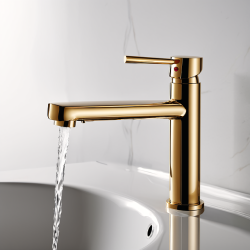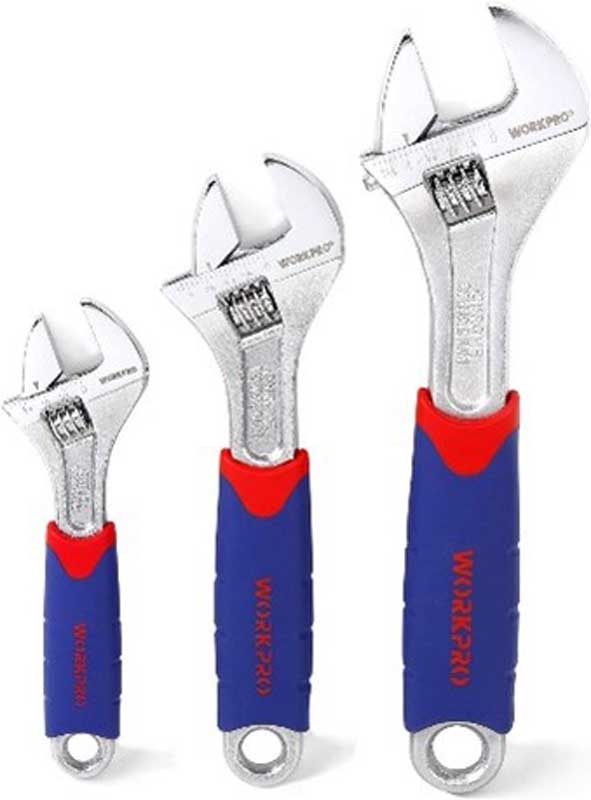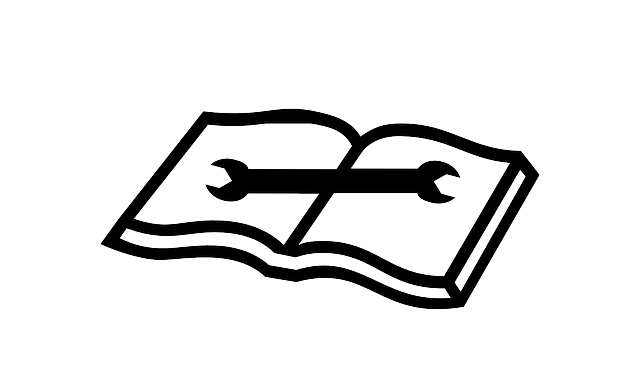

In the age of DIY culture, many homeowners are tempted to tackle plumbing tasks themselves. With countless tutorials and how-to videos available online, the allure of saving money and gaining a sense of accomplishment is strong. But, the question remains: is it wise to jump into plumbing projects without professional help?
Plumbing involves more than just fixing leaks or unclogging drains; it's a complex system that requires a good understanding of water flow and pipework. While some minor repairs can be handled with basic tools and a bit of patience, more significant issues might demand the expertise of a seasoned plumber. Understanding the risks and rewards of DIY plumbing is crucial before picking up that wrench.
Before embarking on any plumbing adventure, it's essential to weigh the potential savings against the possibility of causing more harm than good. A well-informed choice can mean the difference between a successful repair and a costly disaster.
Plumbing, a crucial aspect of home maintenance, involves a variety of tasks and systems like pipes, fixtures and valves. Individuals keen on engaging in DIY plumbing should grasp the essentials of water supply and drainage systems. Together, these system help efficient water flow, ensuring homes are both safe and functional.
Water supply systems distribute potable water. They include features like piping, fittings and tanks, designed to tolerate significant pressure. Drainage systems expel wastewater, using gravity to move water towards a sewer line. Proper knowledge of these systems helps avert common issues like leaks and blockages.
Pipe materials, often copper, plastic or galvanised steel, dictate the longevity and safety of the plumbing system. Each material provides unique benefits and drawbacks. Plastic pipes typically cost less but may not resist heat well. Galvanised steel, while strong, can corrode over time. Copper offers durability but often at a higher price.
Before attempting repairs, beginners should arm themselves with the right tools. Basic tools like wrenches and pipe cutters are essential, while advanced projects might need specialised equipment. Understanding these plumbing fundamentals empowers homeowners to make informed decisions about managing simple repairs safely.
Understanding one's capabilities is essential before tackling plumbing tasks. Recognising which jobs suit a DIY approach and which demand professional skills ensures efficient and safe repairs.
Simple repairs often fit within the scope of DIY plumbing. Minor fixes, such as replacing washers in taps or clearing accessible drain blockages, typically involve straightforward procedures. Installing easy-to-fit fixtures, like showerheads or taps, might also be manageable without specialised training. These tasks, though requiring some basic tools, benefit from careful following of guidelines to avoid making any issues worse.
Complex projects surpass the skills of most homeowners and necessitate expert intervention. Tasks involving the main water supply, such as pipe replacement or extensive leak repairs, require an understanding of advanced plumbing systems to avoid costly damages.
Electrical aspects, like those related to electric boilers or shower units, present unique hazards and should be handled by licensed professionals. Failing to seek professional aid in these instances risks compromising safety and the integrity of the plumbing system.
DIY plumbing requires more than just understanding the mechanics of pipework. Having the right tools and materials ensures tasks are performed efficiently and effectively.

Adjustable Wrench: Crucial for gripping and turning pipes and fasteners of various sizes.
Pipe Wrench: Designed for gripping and turning threaded pipes, offering extra leverage with its long handle.
Plunger: Useful for clearing blockages in sinks, toilets, and drains.
Pipe Cutter: Essential for cutting pipes to the desired length cleanly and accurately.
Tongue-and-Groove Pliers: Versatile tool, ideal for gripping, twisting, and pulling tasks.
Basin Wrench: Specifically for reaching and tightening faucet nuts in confined spaces.
Teflon Tape: Prevents leaks at threaded plumbing connections.
PVC Pipes and Fittings: Lightweight and easy to install, suitable for drainage systems.
Copper Tubing: Excellent for water supply lines due to its durability and corrosion resistance.
Sealants and Adhesives: Essential for waterproofing joints and securing fittings.
Pipe Insulation: Reduces heat loss in hot water lines and prevents cold pipes from freezing.
Washers and Gaskets: Necessary for sealing connections in taps and preventing leaks.
O-Rings: Used to prevent leaks around valves and taps.
Plumber's Putty: Versatile sealing compound for setting sinks and fixtures.
Equipped with these tools and materials, homeowners are better prepared to tackle common plumbing tasks safely and efficiently.
Get helpful tips for two simple plumbing projects in these videos: Change out your shower head and/or change out your shower hose.
When considering DIY plumbing, understanding safety precautions and local regulations ensures both compliance and safety. Adhering to these guidelines prevents complications and future liabilities.
Exploring local plumbing codes is essential for anyone attempting DIY projects. These codes dictate specific standards that prevent hazards and ensure system efficiency. For example, they might specify the types of allowed materials or dictate pipe size requirements. Checking local government or municipal websites is an effective way to access the relevant codes. Compliance isn't optional—it guarantees that work meets safety and health standards, avoiding potential fines or required corrections later. What Plumbing Projects are Notifiable?

Can I Do Plumbing Myself? Yes and make sure you read instructions carefully.
Prioritising safety in DIY plumbing projects minimises accidents and potential damage. Turning off the water supply prevents flooding during repairs. Always use the right protective gear, including gloves and goggles, to shield from chemical splashes or sharp edges. When handling tools, adhering to manufacturer instructions preserves tool integrity and user safety. Also, if electricity is involved, ensure it's disconnected to avoid electrocution risks. Understanding personal limits enhances safety, directing challenging tasks to professionals.
Embarking on plumbing tasks independently has the potential for cost savings, but certain factors impact the overall financial outcome.
DIY plumbing can save on labour costs, which often constitute a significant portion of professional fees. Minor repairs like fixing leaks in taps or replacing simple hardware can avoid service charges. With essential tools already on hand, homeowners might only invest in materials, further reducing expenses. By watching tutorials or reading guides, individuals enhance their skills and tackle multiple minor issues, extending potential savings. But, the risk of mistakes leading to costly repairs must be considered.
Investing in a professional becomes essential when facing complex plumbing issues or when the task involves intricate systems. Professional plumbers bring expertise in diagnosing and resolving complicated problems, preventing further damage. Work involving the main water lines, sewer systems, or connections with electrical components and heating systems require professional intervention to ensure compliance with safety standards. Although the upfront cost is higher, their service often saves money by avoiding future complications and ensuring system longevity. Use licensed plumbers for these involved projects.
DIY plumbing can be an appealing option for many homeowners eager to save money and tackle minor repairs. But, it's crucial to weigh the potential savings against the risks of causing further damage. Understanding the basics of plumbing systems, having the right tools, and recognising personal skill limits are essential steps in ensuring safe and effective repairs. While minor tasks like replacing washers or clearing blockages may be manageable, more complex issues should be left to professionals. By doing so, homeowners can avoid costly mistakes and ensure their plumbing systems remain efficient and compliant with local regulations.
DIY plumbing can help homeowners save on labour costs and provide a sense of accomplishment. It allows individuals to address minor plumbing issues promptly without waiting for a professional. With online tutorials, it's easier than ever to learn simple repairs like fixing leaks or unclogging drains. However, it's important to know one's limitations to avoid causing larger issues.
Suitable DIY plumbing tasks include replacing washers in taps, fixing minor leaks, and clearing accessible drain blockages. These tasks are relatively simple and don't usually involve complex systems or require specialised knowledge. For significant or intricate plumbing issues, it's advisable to seek professional help.
Essential tools for DIY plumbing include adjustable wrenches, pipe wrenches, plungers, pipe cutters, and Teflon tape. These tools help in handling various basic plumbing tasks effectively. It's also advisable to have sealants and plumber's putty on hand to prevent leaks during installation or repair work.
To ensure safety, turn off the water supply before starting any work and use protective gear like gloves and goggles. Always follow manufacturer instructions for tools and be aware of local plumbing codes to ensure compliance. Recognise your limits and consult professionals for complex tasks to prevent accidents and damage.
Plumbing commonly involves materials like PVC pipes, copper tubing, and galvanised steel. Each has its own benefits and drawbacks; for example, PVC is cost-effective and easy to install, while copper is durable and resistant to corrosion. Understanding these materials helps in selecting the appropriate type for your plumbing needs. You also need to decide if you want to use compression fittings, pushfit or soldered joints.
Local plumbing regulations ensure safety and efficiency by dictating specific standards for installation and repairs. Understanding these codes helps in avoiding hazards and potential fines. By checking local government resources, homeowners can ensure their plumbing projects comply with regional requirements.
Hire a professional for complex plumbing issues involving the main water supply, intricate systems, or electrical components. Professional expertise ensures compliance with safety standards and reduces the risk of further damage. Even though it may cost more initially, it can prevent costly repairs and ensure system longevity.
DIY plumbing can save money on service fees by handling simple tasks like minor repairs and maintenance independently. However, it's important to weigh these savings against the risk of errors that could lead to substantial repair costs. In some cases, professional intervention might save more money in the long run by avoiding further complications.